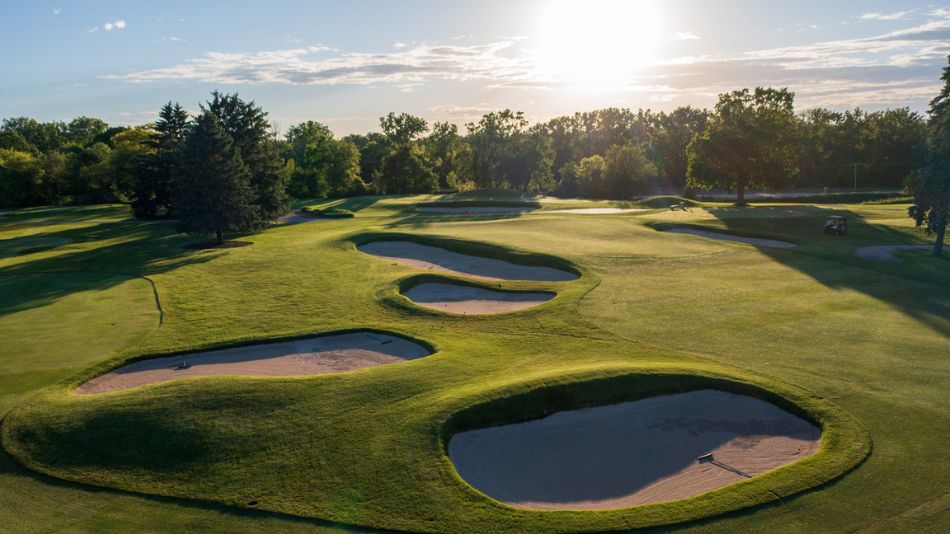ASGCA founding members Donald Ross designed Kenosha (Wis.) County Club in 1922. More than a century later, Drew Rogers, ASGCA (J. Drew Rogers, Golf Course Architect) continues his renovation effort on the property.
Golf Course Architecture reports:
“It is rare to see so many features and forms that have endured over 100 years, essentially in their original state,” said Rogers. “Of course, the layout had succumbed to significant tree planting, which was perhaps the most impacting influence on its design evolution. As they matured, hole corridors tightened and fairways narrowed, with many of the interesting ground features and playing angles completely negated. The ground at Kenosha is made up of two, flat plains – one that is related to the Pike River, and another that rises 20 feet above the floodplain. But the ground on each plain is generally quite flat. Ross employed the use of some really interesting forms to give the corridors definition, but in many cases, those forms were buried within the planted treelines.”
Rogers has overseen a tree management program over several years that was led by superintendent, Paul Bastron. “As the trees were slowly thinned and removed, the course with its many intriguing features began to present itself once again, begging for more specific restorative treatments,” said Rogers.
“The impact of the misplanted trees had such a profound impact on the course for so many years; it can be so gradual that it likely became unnoticeable to the members. But when they understand the impacts to the design and the health of the turf, they really began to buy into the vision. Removing trees was really at the forefront of it all. Once we plotted our plan, it took a gradual approach to get trees thinned out, and that was led by superintendents Paul Bastron and Harrison Beal. They became the lead advocates for the work, and they just kept chipping away at it – and still are!”
Since beginning his work for the club in 2015, Rogers has worked with Bastron and Beal in introducing fescue areas, reinstated original green shapes and pin positions, and recovered fairway configurations and alignments. The irrigation system has been replaced and bridges over the Pike River have been rebuilt. Last year, with Hollembeak Construction, bunkers were renovated closer to their original design.
“Reinstatement has been the order and unlike many so-called restorations, at Kenosha we really didn’t have to dig too deep to understand the original intent,” said Rogers. “It was already there. All we had to do was uncover it and brush it off. Of course, we have modified some tees to address modern play needs, and we shifted a few bunkers so they would better impact today’s length, but overall, it’s amazing how well this course has stood the test of time. Anyone who appreciates Ross’s work will be absolutely fascinated by this place.”
In 2025, he will execute some delicate work on the par-four thirteenth and par-three seventeenth greens. “Today, these greens only support one or two hole locations at best, rendering the majority of the surfaces unusable,” he said. “The other greens are really quite good… plenty of interesting, playful forms that are consistent with Ross’s work and the identity of the course in Kenosha.”

